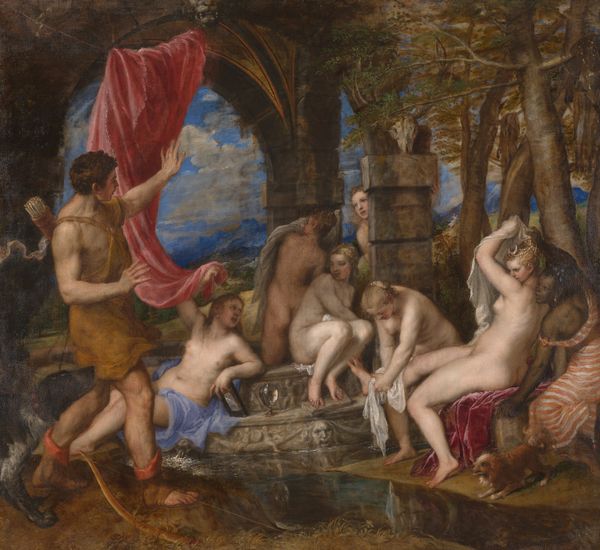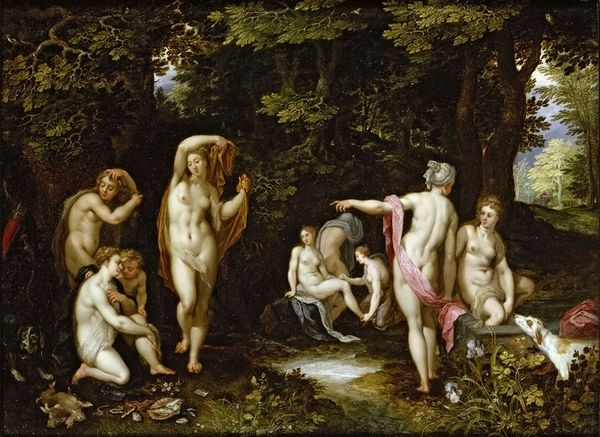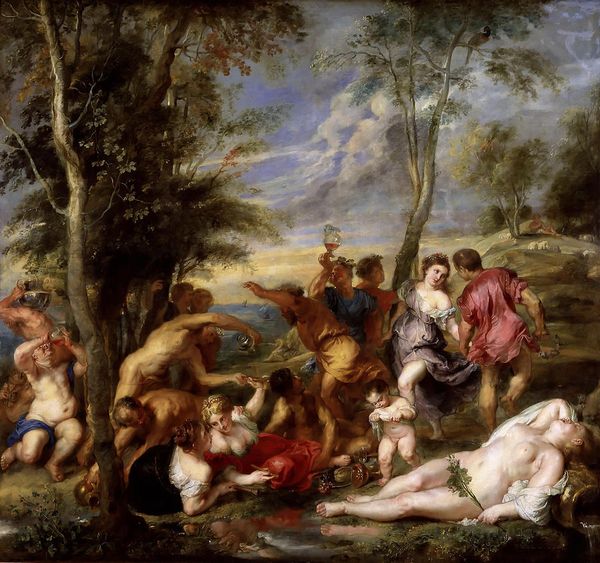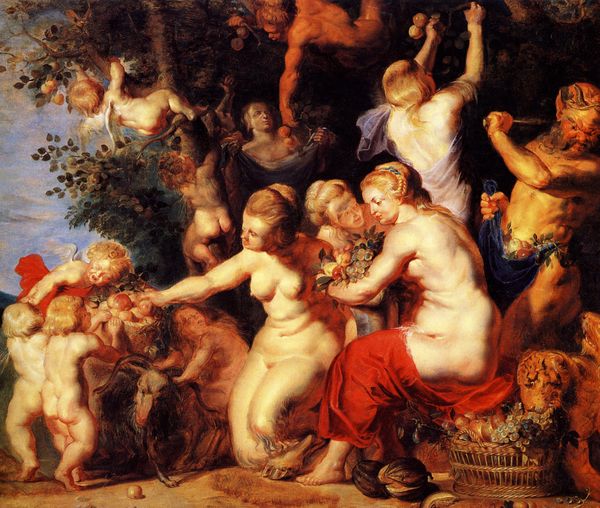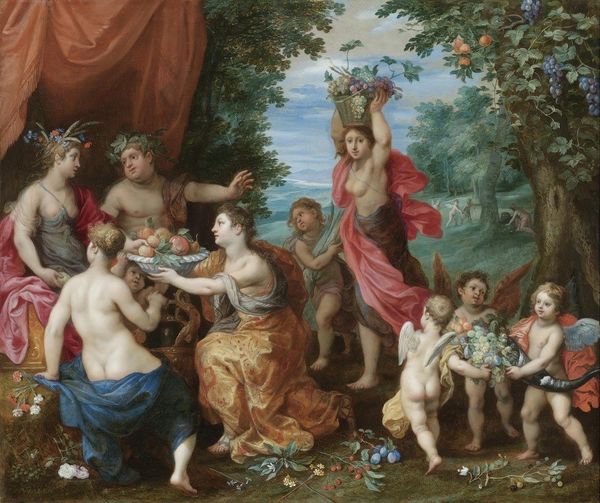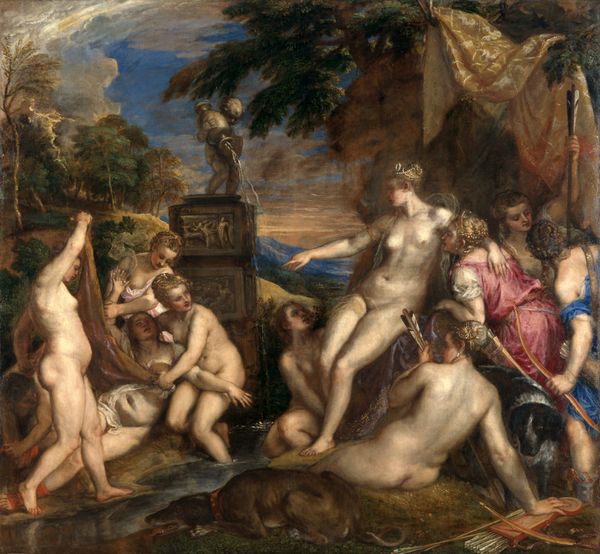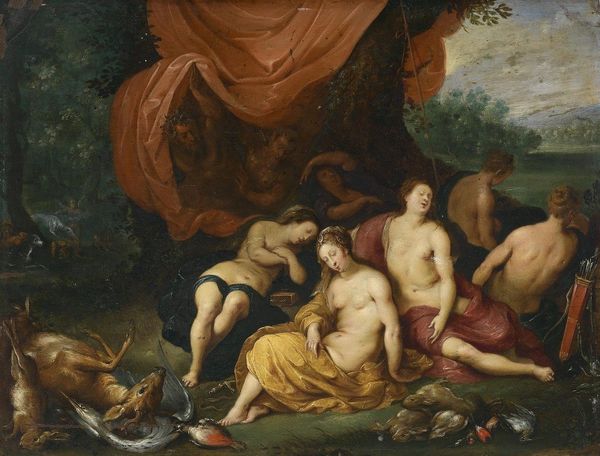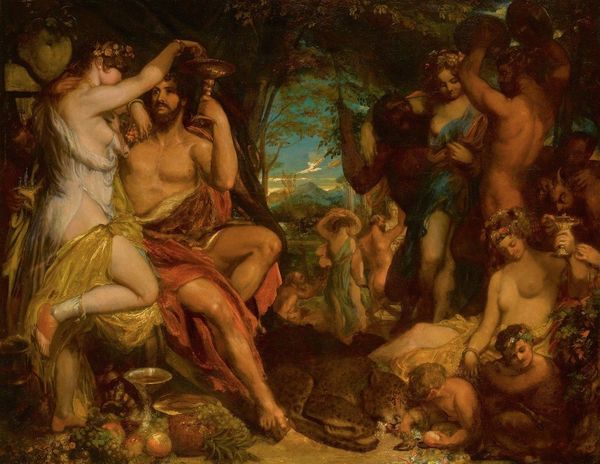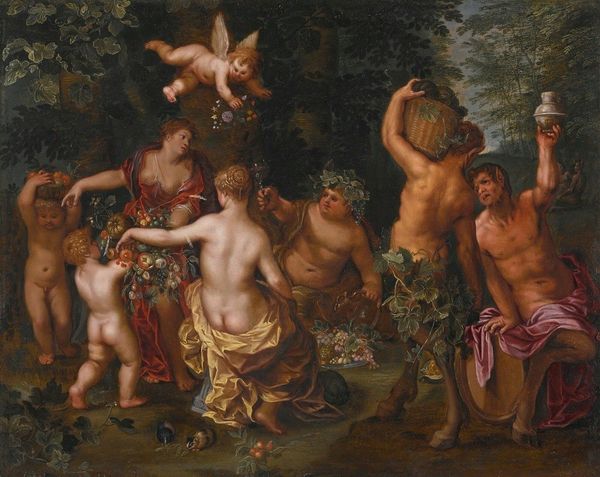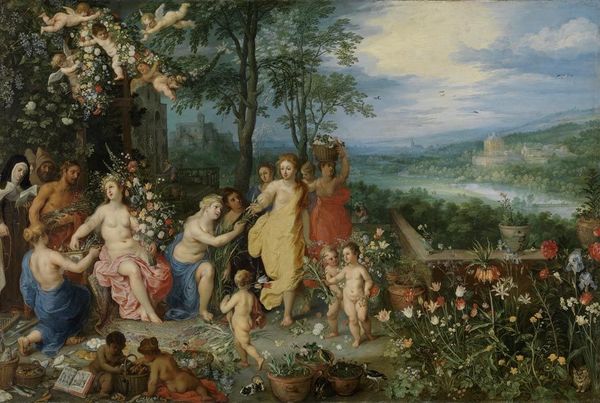
panel, painting, oil-paint
#
panel
#
allegory
#
baroque
#
painting
#
oil-paint
#
oil painting
#
mythology
#
nude
Copyright: Public Domain: Artvee
Jan Brueghel the Younger painted 'Diana and Callisto' to capture the intimate moment of discovery among Diana and her nymphs. The central drama unfolds as Diana points an accusing finger at Callisto, exposing her pregnancy—a violation of her vow of chastity. The motif of the huntress goddess is ancient, linking back to Artemis in Greek lore. Often, we see Diana with her bow, a crescent moon adorning her brow, symbols of her independence and connection to the wild. Here, though, she embodies purity and wrath. Think of the many Judgments of Paris, or Susannahs at the bath, through the ages. We have seen countless voyeuristic scenes in art history, each mirroring a societal gaze, laden with judgement. The shame on Callisto’s face reminds us of countless women branded with transgression, a stark reflection of societal expectations. The painting stirs deep-seated emotions, tapping into our collective memory of purity, transgression, and the consequences that follow. These stories resonate across time, reappearing in new guises, echoing through our cultural narrative, reminding us of the enduring power of symbols to evoke our deepest fears and desires.
Comments
No comments
Be the first to comment and join the conversation on the ultimate creative platform.
